Inside the U.S. Military’s Five ELITE Tier One Units (What do they do?)

The United States Special Operations Forces encompass a wide range of highly capable units that tackle some of the most demanding missions ever seen before. While numerous SOF units possess exceptional capabilities and have earned their stripes, there are just five particular units that stand out among the rest as tier one special mission units under the Joint Special Operations Command.
These five units operate in the shadows, and make a gigantic impact throughout the world, all while leaving virtually no trace of their existence. With that said, what are the five U.S. Military Tier One units? How much is known about them? And, most importantly, what do they do?
Keep reading as we dive into some of the most highly classified and secretive special operations units in the United States military.
TABLE OF CONTENTS
U.S. MILITARY TIER ONE UNITS: DELTA FORCE
U.S. MILITARY TIER ONE UNITS: SEAL TEAM SIX (DEVGRU)
U.S. MILITARY TIER ONE UNITS: 24TH SPECIAL TACTICS SQUADRON
U.S. MILITARY TIER ONE UNITS: REGIMENTAL RECONNAISSANCE COMPANY (RRC)
U.S. MILITARY TIER ONE UNITS: INTELLIGENCE SUPPORT ACTIVITY (ISA)
U.S. MILITARY TIER ONE UNITS: HONORABLE MENTION
U.S. MILITARY TIER ONE UNITS: CONCLUSION
U.S. MILITARY TIER ONE UNITS: DELTA FORCE

Did you ever worry about the boogeyman at night as a kid? Well, for enemies of the United States, they actually have one: Delta Force. Well known for their professionalism, secrecy, and mission success rate, Delta Force is the premier Special Mission Unit of the U.S. Army, always willing to answer the call for the toughest missions out there.
Despite being one of the most recognized tier one units in JSOC, the Department of Defense tightly controls information about Delta Force, refusing to comment publicly on the highly secretive unit and its activities. These operators work under the veil of secrecy, hidden from the enemy.
As an elite counterterrorism unit, Delta Force has been part of several important missions that have made national headlines, such as the capture of Saddam Hussein, assisting with the evacuation of personnel from the embassy during the 2012 Benghazi attack, and capturing drug kingpin El Chapo.
Interestingly enough, Delta Force actually goes by several different monikers. You may have heard it referred to as the Combat Applications Group, Army Compartmented Elements, and 1st Special Forces Operational Detachment-Delta.
But despite the several names this elite unit has, there’s one thing that everyone knows about it: you don’t want to be on the receiving end of what they’re capable of.
Because of how multifaceted Delta Force’s mission set is, its operators are highly skilled and trained in specialized disciplines in order to see their missions through. In fact, many of Delta Force’s personnel are seasoned SOF operators who’ve had years and years of experience doing what they do best.
The overarching purpose of Delta Force is to execute complex, high-stakes missions that regular SOF forces wouldn’t be able to do as efficiently, as JSOC has no room for failure. These missions are highly classified and dangerous, and range from hostage rescue, counterterrorism, direct action, special reconnaissance, capturing high-value targets, and dismantling terrorist cells. But that’s just the tip of the iceberg, Delta Force and its operators are extremely flexible with their capabilities, and the unit is not limited based on those primary missions. Their teams are small, agile, and able to deploy rapidly whenever JSOC taps them with the next job at hand.
Delta Force operators are placed in one of its four assault squadrons, which are named A, B, C, and D, respectively. Each of these have two direct action assault troops, which consist of shooters, and a recon and surveillance troop, which has shooters and snipers. Fun fact: Delta Force’s structure is inspired by the British Special Air Service.
Additionally, each Delta Force operator is trained in a wide variety of skills to ensure they will thrive in the environments they get thrown into. Some of these skills are Close quarters combat, hand-to-hand combat, direct action, and advanced marksmanship, because being able to rapidly breach, clear and search buildings and rooms is an essential tactical skill for this unit.
So you know a bit about what the U.S. government allows you to know about Delta Force, but what about how you can get into this unit? For starters, Delta Force routinely pulls personnel from mainly the Army Green Berets and Army Rangers, but what makes this unit unique is that it allows people from every branch of the military, SOF or not, to try out. Thus, you can say Delta Force is like the “equal opportunity” employer of the Tier One Units.
Delta Force selection is unlike any other selection out there. As most of its candidates are already SOF members with years of experience and multiple deployments, they gotta get creative with their gutchecks.
Delta Force selection is roughly four weeks long and occurs twice a year in Camp Dawson, West Virginia. During these four gruesome weeks, candidates are put to the test like they’ve never been before with various day and nighttime land navigation courses, where they’ll be expected to ruck multiple miles with a heavy load on their back. As the distances increase, so does the weight, but the timelines decrease. But it’s not all physical - on top of already being mentally tested for their brutal physicality, candidates undergo numerous psychiatric exams. They’re barraged with questions from a board of Delta instructors and unit psychologists, and their answers are heavily scrutinized, getting dissected piece by piece. This is intended to mentally wear down the candidate. It all culminates with a 40 mile ruck march to be completed in an unknown amount of time, known as “The Long Walk”. Assuming they don’t quit, only after this is completed will a candidate know if they were selected into the Delta Force.
If selected in the four week course, candidates will then go off the grid, hardly communicating with anyone from the outside world, to attend the 6 month Operator Training Course. OTC is the constantly evolving, end-stage portion of the Delta Force pipeline. Here, you can expect to be trained in a variety of small arms, as well as specialized roles like support weapons and sniping and observing. The course also involves an advanced parachuting school, training in CQC, demolitions, tradecraft, and VIP protection tactics. After OTC, a newly minted Delta Force operator will integrate with a team and begin working up for their first mission.
To put this in perspective on how tough this selection really is, a Delta Force operator once said that only 12 to 14 completed out of a pool of 120 applicants - which is absolutely insane. Remember, those numbers don’t reflect average Joes showing up to selection, they’re mostly SOF operators or those Delta Force deemed worthy of giving a shot.
With Delta Force covered, let’s move on to the next tier one special mission unit, the U.S. Navy’s SEAL Team Six.
U.S. MILITARY TIER ONE UNITS: SEAL TEAM SIX (DEVGRU)

SEAL Team 6, officially known as the Naval Special Warfare Development Group, or DEVGRU for short, hardly requires an introduction. From high-profile missions capturing national headlines, to blockbuster movies and best-selling books, SEAL Team 6 has become a household name. But despite their fame, as you’ll come to learn with any of the Tier One units, many of the finer details about DEVGRU are classified and unknown to the world.
As the premier counterterrorism unit of the U.S. Navy, SEAL Team 6 is quite literally the definition of “best of the best,” as this unit is made up of SEALs selected from existing SEAL Teams. As you’d expect from a Tier One special mission unit in JSOC, they’re utilized in the full spectrum of operations. DEVGRU specializes in areas such as counterterrorism, direct action, hostage rescue, high value target extraction, counter proliferation, special reconnaissance, and a whole slew of other things - but there’s two things that set SEAL Team 6 apart from the other Tier One units - it’s maritime and free-fall capabilities.
It’s no secret that Navy SEALs are known for their talent in the water. Hell, even their name literally deals with an aquatic animal. But when you put together the best Navy SEALs into a tier one unit, you can be certain that they will be taking their maritime skills and expertise to the next level. Additionally, SEAL Team 6 operators spend a lot of time perfecting their free fall skills, or more specifically, HALO and HAHO jumps. While most special operations personnel receive free-fall training, SEAL Team 6 takes their skill set to another level. Mastery of free fall requires lots of training and practice to begin with, but they have been known to spend a considerable amount of time and resources to ensure they can conduct those types of missions with the utmost precision. For example, during the hunt for Osama Bin Laden, SEAL Team 6 always had an assault troop on standby to conduct a HAHO jump into Pakistan to neutralize or capture him.
But how is SEAL Team 6 structured to get the job done? All in all, there are six squadrons within the unit, each with their own purpose and specialty. Four out of the six squadrons are the assault squadrons, which is where the operators are placed.
For the assault squadrons, there’s the Red Squadron, known as “the tribe” or “Redmen”, the Blue Squadron, known as the pirates, the Silver Squadron, which uses a mix of the other squadrons insignias, and the Gold Squadron, known as the Knights or Crusaders. Each of these squadrons is divided into three troops of SEALs, and the troops are divided into even smaller teams. Each DEVGRU operator plays a specific role on these teams.
Then there’s the Grey and Black squadrons, which are the support squadrons. The Grey Squadron is known as the Vikings and consists of divers and personnel trained to drive the custom vehicles utilized by SEAL Team Six. And last but not least, the Black Squadron, which conducts reconnaissance, surveillance, espionage, and advance force operations.
With the mission set and structure of SEAL Team 6 covered, let’s move on to its selection process. DEVGRU’s selection is known as the “Green Team”. Unlike the other Tier One units, this selection is only limited to one community: the Navy SEALs - but not just any Navy SEAL. Only the top performing team guys who are in peak physical condition get invited to try out for SEAL Team Six. Typically, they will have multiple deployments under their belt and over 5 years of experience in the teams.
The Green Team’s selection process happens once a year and lasts around six months. These candidates, which we’ll remind you have already passed one of the hardest military selection processes in the entire world, are put through yet another challenging and arduous selection. They’re constantly observed, scrutinized, and evaluated by the DEVGRU instructors, being put through immense pressure. Roughly 50% make it through Green Team and onto SEAL Team Six. Yes, you read that right, a selection process that weeds out people who have passed what is considered the world’s toughest military training has an attrition rate of 50%. Let that sink in.
It’s safe to say that SEAL Team 6 has solidified its place as not just a Tier One special operations unit, but as a legendary fighting force.
With SEAL Team 6 covered, let’s jump into the 24th Special Tactics Squadron.
U.S. MILITARY TIER ONE UNITS: 24TH SPECIAL TACTICS SQUADRON

When the Tier One units need advanced coordination of air assets, direct fire missions via close air support, the recovery of downed personnel in enemy territory, or advanced battlefield medical care, who do they call? That would be the 24th Special Tactics Squadron, the U.S. Air Force’s only Tier One special mission unit in JSOC. Also known as Task Force White, the 24th STS is an elite group of airmen whose main mission is to support and enable the other special mission units within JSOC.
Air dominance and control over any area of operation have long been crucial elements of military doctrine, especially when it comes to SOF missions. The primary purpose of the 24th STS is to help further that doctrine and ensure that U.S. airpower is fully utilized alongside ground-based special operations forces. This is what separates the 24th STS from its other Tier One counterparts, as it is not solely a direct combat-oriented team. It carries with it a number of other purposes, including airfield reconnaissance, personnel recovery and triage, assessment and control, joint terminal attack control, and even humanitarian efforts.
The communities that make up the 24th STS are predominantly Air Force Combat Controllers, Pararescuemen, Special Reconnaissance, and select Tactical Air Control Party personnel. These airmen typically augment the other Tier One units, and embed within their teams, where they bring their unique skill sets and talents to the table. To put things simply, you can look at the 24th STS like the free agents of the Tier One units. We’ll give you an example with the Combat Controllers.
Normally, CCT’s are often a one-man attachment to special operations teams because they are a force multiplier and are the only certified Air Traffic Controllers on the battlefield for calling in air support. CCT’s in the 24th STS have an added layer of training in order to be able to match the operational tempo of a tier one unit, and believe us, they do exactly that.
The story of John A. Chapman, a 24th STS CCT, sums up what we’re trying to say perfectly. In 2002, while attached to a SEAL team, Chapman was severely injured, and his team was forced to abandon him. Despite being mortally wounded and alone, Chapman would hold his ground against two dozen enemy combatants in one of the bravest one-man stands ever witnessed. His actions and self-sacrifice would save 23 lives that day, and are one of the most courageous acts of heroism the world has ever seen. His brave stand was the first medal of honor ever recorded on video.
Whether it’s a CCT augmenting a team for their air support, a PJ being used for their medical capabilities, or a Special Recon for the reconnaissance asset, the 24th STS can be found working alongside the best of the best. And this is yet another thing that separates them from operators in the other Tier One units - not only do they know how to do their own organic job, but they also receive training to be up to speed with whatever unit they wind up working with. As such, all 24th STS members are trained in counter-terrorism, direct action, hostage rescue, counterinsurgency, special reconnaissance, and much, much more. They’re quite literally the jacks of all trades.
With the 24th STS covered, let’s move on to the Regimental Reconnaissance Company.
U.S. MILITARY TIER ONE UNITS: REGIMENTAL RECONNAISSANCE COMPANY (RRC)

The United States Army Rangers are one of the most capable and lethal fighting forces in the entire world. As the Army's premier direct-action raid force, there’s a reason why almost everyone has heard of their motto, “Rangers Lead the Way”.
But what if we told you that within the highly renowned 75th Ranger Regiment lies a mysterious, secretive unit that executes some of the world's most covert operations. That would be the Regimental Reconnaissance Company, the Army Rangers’ Tier One unit.
The Regimental Reconnaissance Company generally consists of the best of the best U.S. Army Rangers, who are trained not only to do everything a Ranger can do, but much more. The unit’s three primary tasks are Active Reconnaissance, Surveillance, and Direct Action. However, in furtherance of its mission set, it is also involved in conducting raids, ambushes, patrols, demolitions, and direct airstrikes.
Despite its combat capabilities, RRC is often tasked with performing reconnaissance for the other Tier One Units in JSOC, which requires a higher level of intelligence, analysis, and proficiency to ensure that operations run smoothly. As such, the RRC prides itself on being an adaptable and dedicated intelligence unit, and is a master of Human, Signal, Electronic, and Communications intelligence. Each RRC operator has a lot of highly refined skills, and can even learn interrogation techniques, surveillance, and computer hacking.
In order to get into RRC, the Ranger Regiment only taps the best performing Rangers to try out for its selection process. RRC selection is a two phase process, where the first phase is designed to weed out candidates, and the second phase is designed to build up and train those who make it through.
Phase 1 of the selection process for RRC is two weeks long in an undisclosed area. Candidates will conduct long distance, advanced land navigation while rucking with around 60-70 pounds of weight. Each day they can easily expect to cover over 12-18 miles in mountainous terrain, as well as having to do some fast-paced ruck marches. To top that all off, there’s an event where they must ruck roughly 30-40 miles, but the actual distance is never disclosed. And if that wasn’t enough, they go through a series of psychological evaluations and interviews, and must pass a review board to move on to phase 2 of training.
Phase 2 consists of the 29 week Recon Training Course. Here, candidates will learn the skills they will use to operate as JSOC’s reconnaissance asset. Candidates will build the foundations of an RRC operator by learning skills such as military freefall, advanced communications, digital photography, computers, photo editing, field-craft and stalks, infiltration and exfiltration methods, close-air support, advanced driving techniques, demolitions, advanced medical techniques, and tactical man-tracking.
Due to their rigorous and in-depth training, discrete nature, and ability to fulfill the essential role of support and intelligence operations, it’s safe to say that the Regimental Reconnaissance Company is a lethal foe, yet an invaluable ally. While the totality of their operations is not yet fully known, nor will it likely ever be, you can bet that wherever the 75th Ranger Regiment is, the RRC is not too far behind.
With the Regimental Reconnaissance Company covered, let’s move onto the Intelligence Support Activity.
U.S. MILITARY TIER ONE UNITS: INTELLIGENCE SUPPORT ACTIVITY (ISA)

Arguably the most covert and secretive Tier One unit of the bunch, the Intelligence Support Activity is unlike any other Tier One unit discussed in this blog post. While other SOF forces are mostly dedicated to direct combat, the ISA focuses more on secretive and clandestine actions necessary to support other military operations. In fact, its scope is quite large. Not only does it support JSOC, but it also supports SOCOM and other intelligence agencies. All in all, it’s been said the ISA is the U.S. military’s own “covert army.”
Officially known as the 1st Capabilities Integration Group (Airborne), the ISA conducts intelligence and espionage operations at a tactical level. To boil things down, you could look at an ISA operative similar to a CIA case officer. But don’t get it twisted, most ISA operatives are highly skilled Green Berets, and even though they can function as shooters and operators, most of its personnel are selected because they are uniquely multilingual, as well as for their raw intelligence and ability to be placed deep undercover.
Naturally, as an intelligence centric unit, the most common products of ISA’s operations are through the collection of Human intelligence and Signals Intelligence. ISA human intelligence collectors gather information from human sources via coercion and interrogation, depending on the asset. Their operatives are masters of screening, tactical questioning, interrogation, and liaison operations, which enable them to collect the best intelligence possible.
Additionally, ISA operatives gather signals intelligence primarily by intercepting enemy communications or sending an agent to physically bug a target. And as you may expect, there are also teams within the ISA who can conduct direct action missions should the need arise.
It is believed that the ISA consists of a few squadrons, each with something unique to bring to the table. There’s the Operations Squadron, sometimes referred to as the Human Intelligence or Ground Squadron, which functions as the ISA’s human intelligence collection squadron. Then there’s the Signals Intelligence Squadron, which, as you might have guessed, is responsible for the ISA’s signals intelligence mission. Lastly, there’s the Mission Support Squadron. The breakdown of this squadron isn’t exactly known, but it likely contains logistical support for the two operational squadrons, such as procuring equipment, getting funding for operations or training, and human resources functions.
Although most of the information about the Intelligence Support activity remains in obscurity, it has become one of the most interesting and influential special operations groups at the disposal of JSOC and the U.S. military.
U.S. MILITARY TIER ONE UNITS: HONORABLE MENTION

While there are technically only five Tier One units within JSOC, it wouldn’t be right not to give an honorable mention to the unit that has been supporting each and every single one of the Tier One units, and has been a part of several major special operations missions in U.S. military history. That unit would be the world’s premier special operations aviation unit, the 160th Special Operations Aviation Regiment, also referred to as the Night Stalkers.
Specializing in transport, attack, and reconnaissance missions, Night Stalkers are highly trained and ready to accomplish the very toughest missions in all environments, anywhere in the world, day or night, with world-class precision.
U.S. MILITARY TIER ONE UNITS: CONCLUSION

With every Tier One unit covered, you now know everything that the U.S. government permits you to know about its highly mysterious and elite Tier One special mission units. While we may never know the full extent of what these units do, we can rest easy knowing that they are on our side and protecting our nation’s interests.
If you want to learn more about the military, law enforcement, or government entities, we have a YouTube channel dedicated to providing the best info out there, plus we have a growing list of blog posts as well. Click the links to take you to them!
General Discharge is a veteran-owned, veteran-operated organization that is dedicated to providing the best U.S. Military and Law Enforcement information. With over 250 YouTube videos, over 45 million views, and hundreds of thousands of followers, we have contributed to the success and knowledge of both the current and future generations of service members.
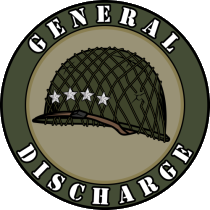
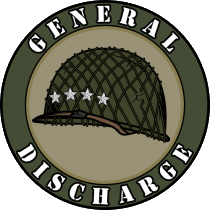
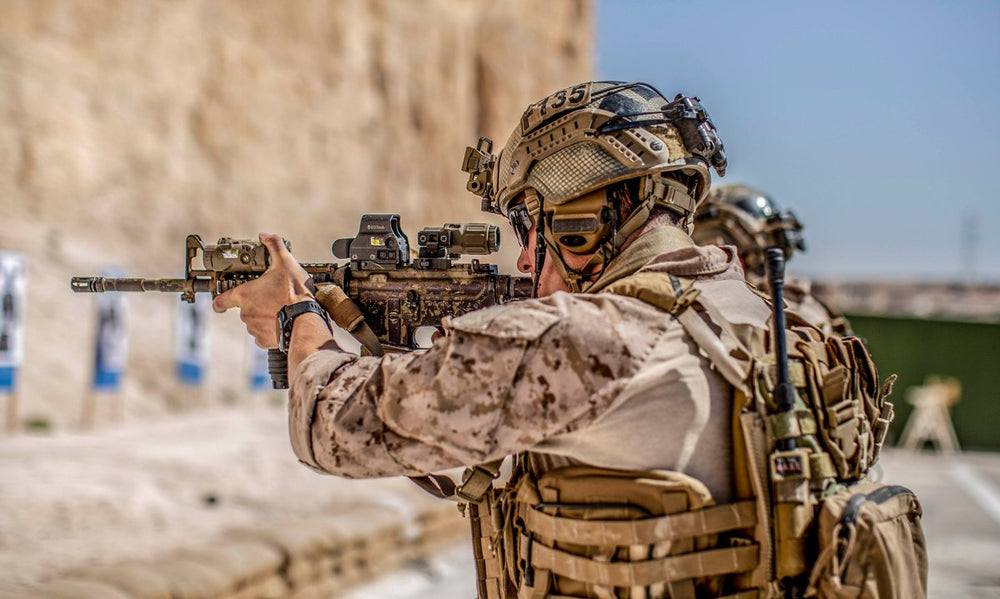
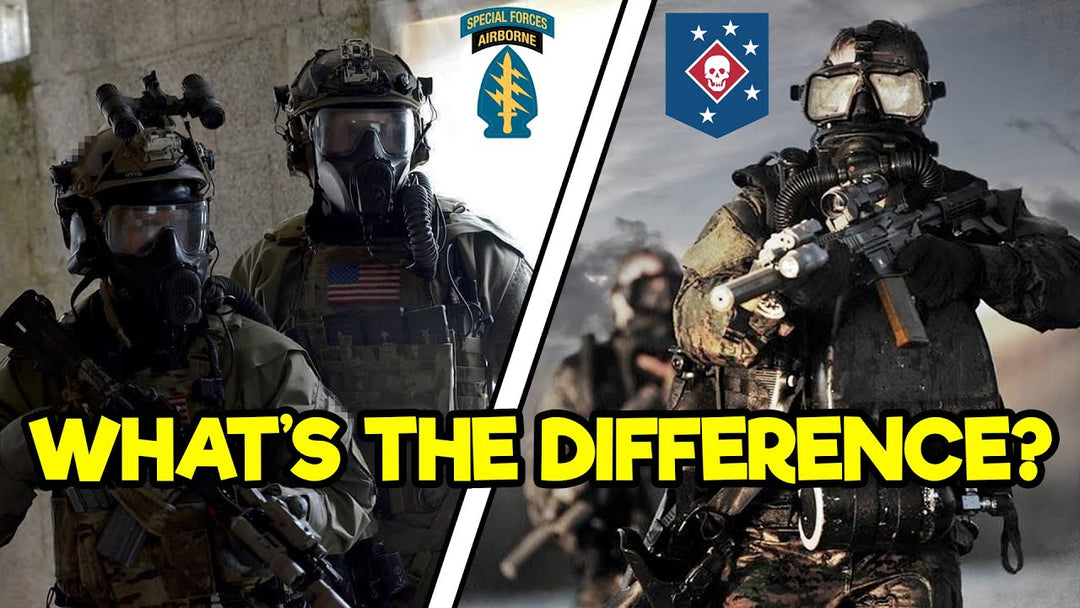
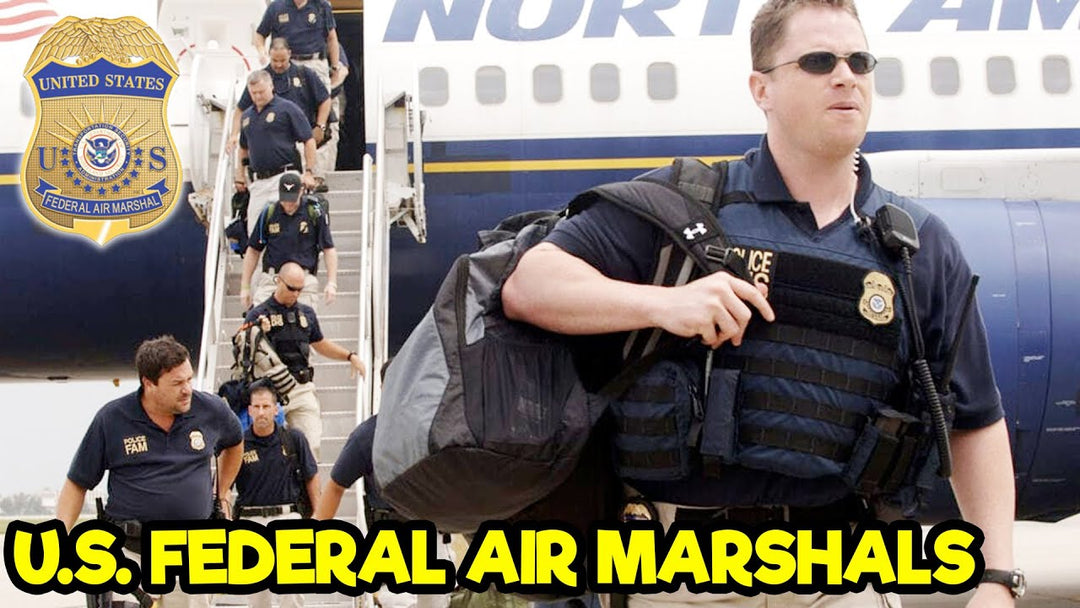
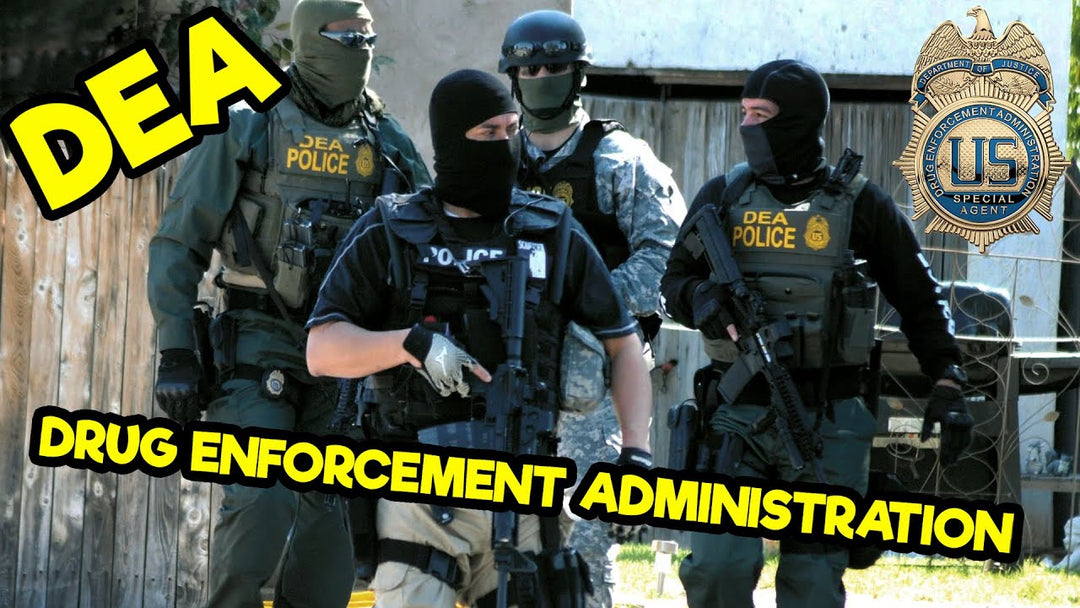
The 24th mainly augments with CAG for there DA efforts, gotta be the two coolest SMU’s we got
I traned with 5th group will with the 101st airborne tiger force but never we went go any where else like ter1
The ISA draws talent from all the services. It’s an Army unit b I t there have been many NSW operators as welk as Marine force recon personnel that have been TAD’d to task force orange.
HOOHA!!!!! 🇺🇸 USA
Proud to be american
Leave a comment